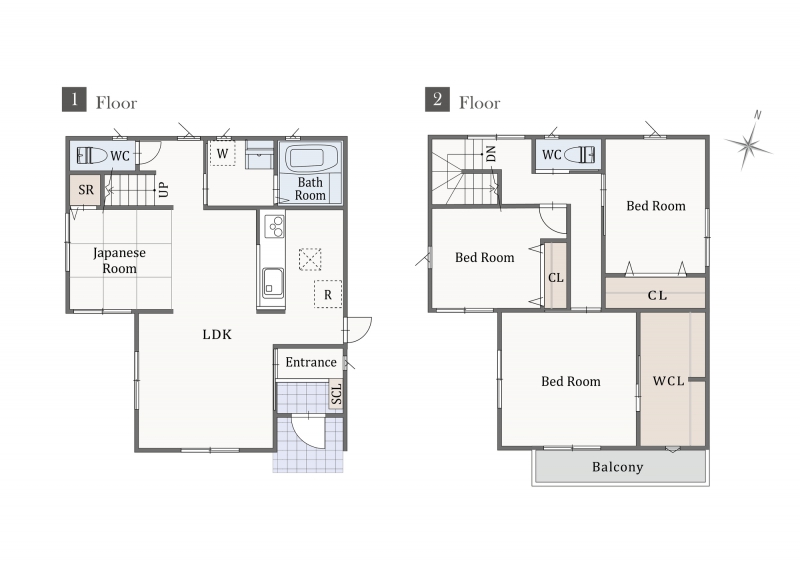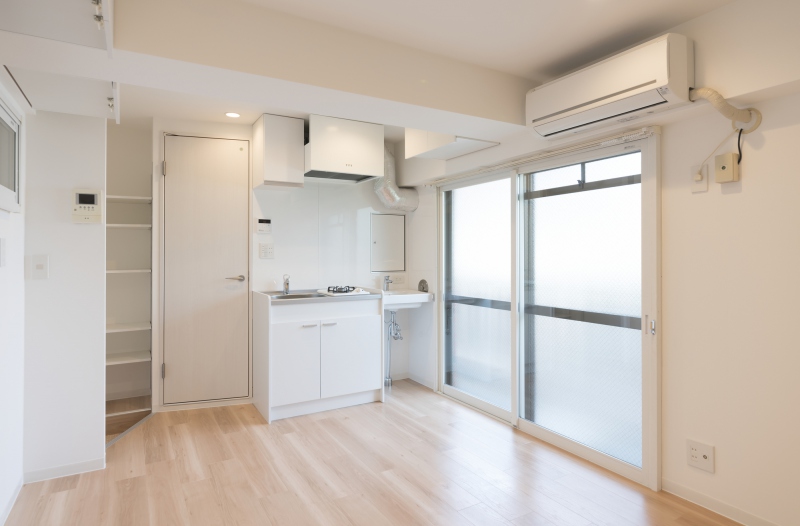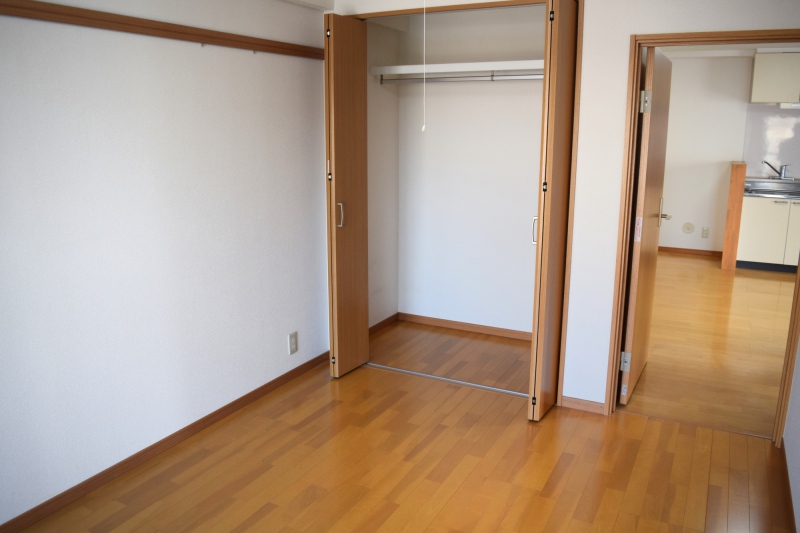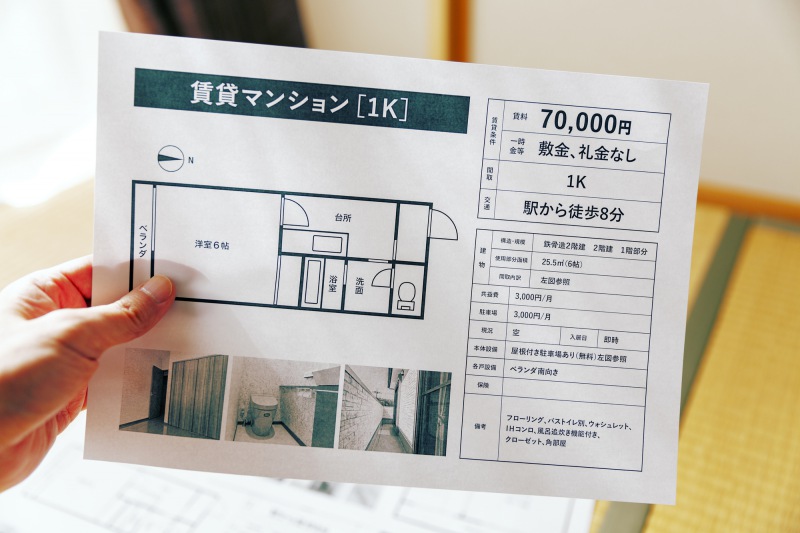In order to start your life in Japan, first you need to find an apartment that suits your lifestyle. In Japan, the layout of an apartment is expressed using a uniquely Japanese way of abbreviating, such as “1R” and “1K.” This article will give a detailed explanation about what these mean, and some pointers for choosing a property. You can also check Japan Property, one of the leading property portal websites in Japan, to find the best property to rent or buy for you!
Understanding Property Listings on Japanese Real Estate Portal Sites

There are many different styles of housing in Japan, such as “mansions” (which refer to a type of apartment, not big expensive houses), apartments, detached houses, and share houses. You could enjoy living alongside friends in a share house, but people who like to have their own space and time to themselves might be better off choosing a mansion or apartment. There isn’t really much difference between these two types of housing, and the definitions can differ depending on the agency handling the property.
Typically, mansions are high-rise residential buildings with many homes. The rent is expensive, but they are great from a security standpoint and come with more features.

On the other hand, apartments tend to be low-rise buildings with only a few residences, making it easy to forge connections with your neighbors. The rent is also often comparatively cheap.
It’s best to actually look for yourself and choose the type that suits your lifestyle, as everyone has different needs and preferences.

At Japanese real estate portal sites and agencies, you’ll see plans with the property details written on them like the one above, so you can decide on which apartment you’d like to live in. This is known as the “floor plan,” and it also includes all kinds of information about the residence. If you can fully comprehend the floor plan, you can find your dream home.
Now, we’ll go into detail about these floor plans.
Firstly, we’ll look at the part outlined in red in the above image. Let’s analyze what kind of things are written here.
- 賃料: 70,000円 ⇒ 1 month’s rent
- 敷金礼金: なし ⇒ Click this related article for details
- 間取り: 1K ⇒ Abbreviations such as 1R/1K/1DK indicate the style of apartment
- アクセス: 〇〇駅から徒歩8分 ⇒ Distance to the nearest station
- 面積: 25.5㎡ ⇒ Size of the apartment
- 部屋の向き: 南向き ⇒ Direction the balcony faces
- 設備: バス・トイレ別 ⇒ Details of the apartment’s facilities
- 所在地: 東京都〇〇区〇〇町〇-〇-〇 ⇒ Building address
- 管理費: 3,000円 ⇒ Fee required for upkeep of the home
- 築年数: 10年 ⇒ Years since construction of the building was completed
The part outlined in blue on the left side of the above image is a floor plan depicting a bird’s-eye view of the apartment layout.
In the next section, we’ll explain just what on earth the code-like letter combinations for the apartment layout actually mean.
What Do Letters Like R, L, D & K on the Floor Plan Mean?

The letters used on floor plans are as follows:
- R stands for Room. This refers to a single room. It may also stand for refrigerator to indicate where the refrigerator is placed.
- L stands for Living. This is the space you would use as a living room where you would put things like a sofa, table, and TV.
- D stands for Dining. This is the meal space you would use as a dining room where you would put a dining table and chairs.
- K stands for Kitchen. This refers to the cooking area.
- S stands for Service. This is used as a store room or free space.
- RF stands for Roof Floor. This refers to a room located in the mezzanine or attic.
- CL stands for Closet. This is a storage space for clothes and so on.
- WCL/WIC stands for Walk-In Closet. Unlike a regular closet, this is a relatively large closet that you can walk inside.
- UB stands for Unit Bath. A bathroom where all parts such as the floor, walls, and ceiling are constructed as one unit from materials with a high water resistance. Most rental properties in Japan use these.
- WC/T stands for Water Closet/Toilet. This refers to the bathroom.
- W stands for Washing Machine. This is a space for a washing machine to be installed.
These are the most typical letters used on floor plans. By understanding these, you will be better able to picture the property when house-hunting.
So, What Exactly Are 1R and 1K Apartments?
Based on the above-mentioned letters, let’s look at what apartment layouts such as “1K” and “1DK” are actually like!
The number that comes before the letters indicates the number of rooms. For example, “1K” means that the apartment has one room in addition to a separate kitchen. Or if the listing says 3DK, that means that in addition to 3 rooms, the apartment also has a dining room and kitchen.
Now, let’s take a look at what the most common apartment layouts for people living alone in Japan look like!

[ 1R ]
The simplest layout. It has no division between the entryway and the room, so opening the door leads directly into the apartment. There is also a kitchen fitted in the room.
Advantages: As this is a compact layout that is only fitted with the bare minimum you need, the market price for these rentals is comparatively low. There are no partitions in the apartment, so it feels spacious.

[ 1K ]
Unlike the 1R style, this layout has a separate entryway and kitchen.
Advantages: If you get visitors at your door, it’s difficult for them to see inside the apartment. Because the kitchen and the rest of the apartment are separate, cooking smells won’t permeate the whole apartment easily.

Even though this is a layout for single people, this type of room guarantees plenty of space. It has a dining room fitted with a kitchen, and a bedroom.
Advantages: The meal space and the bedroom are separated, so it’s easy to lead a balanced life.

[ 1LDK ]
This is the most spacious type of apartment layout for single people. In addition to the 1DK layout, it also has a living room. Depending on your circumstances, this layout is of a size that could house two people.
Advantages: You can lead a comfortable life. You can enjoy coordinating your interior decorating across the multiple rooms.
House-Hunting Advice: Find the Layout that Works For You

▼ 1R is for you if:
- You want to keep your rent down
- You don’t have many belongings (as there isn’t much storage space)
- You don’t do much cooking (as smells from cooking in the kitchen easily permeate the whole room)
- You won’t spend much time at home aside from sleeping (as these only have the bare minimum)
▼ 1K is for you if:
- Privacy is important to you (because it’s difficult to see into the apartment from the entryway)
- You cook often (the kitchen and bedroom are separate so you won’t be bothered by any cooking smells)
- Amenities are important to you to a certain degree (this type of apartment has more features than a 1R)
▼ 1DK is for you if:
- You want a separate meal space and sleeping space
- You cook often (this type of apartment has a larger kitchen compared to 1R/1K)
- You have a somewhat larger number of belongings
- You want to do some interior decorating
▼ 1LDK is for you if:
- You want to make your time at home perfect
- You have a lot of belongings
- You want to do some interior decorating
- You plan to live with either a partner or a friend
Get a firm handle on which of these points are most important to you, and try to choose the best layout for your lifestyle. If you have the time, it’s also recommended to do a private viewing, rather than deciding solely based on the property information listed online or at the agency office. This will provide you with information you won’t otherwise be able to obtain, such as how much sunlight the apartment gets or the atmosphere of the neighborhood. It’s where you’re going to live, so you should choose the right property for you. Don’t make half-hearted decisions or compromises.
What did you think about these apartment layouts? When house-hunting in Japan, you’ll almost certainly see some of these letters. This uniquely Japanese way of abbreviating can be confusing at first, but if that happens, you can use this article as your guide to selecting a property. We hope that this article will help you lead a wonderful life in Japan.
If you want to give feedback on any of our articles, you have an idea that you’d really like to see come to life, or you just have a question on Japan, hit us up on our Facebook!
The information in this article is accurate at the time of publication.

